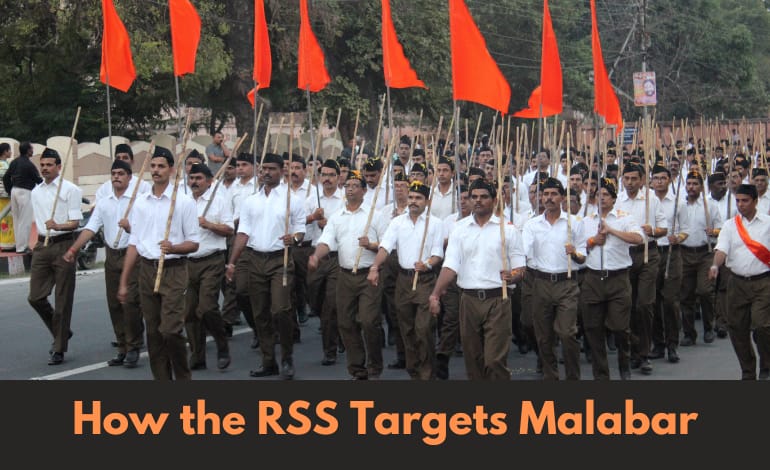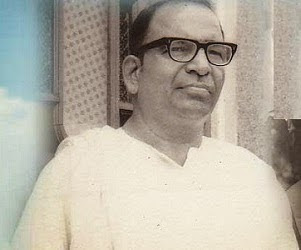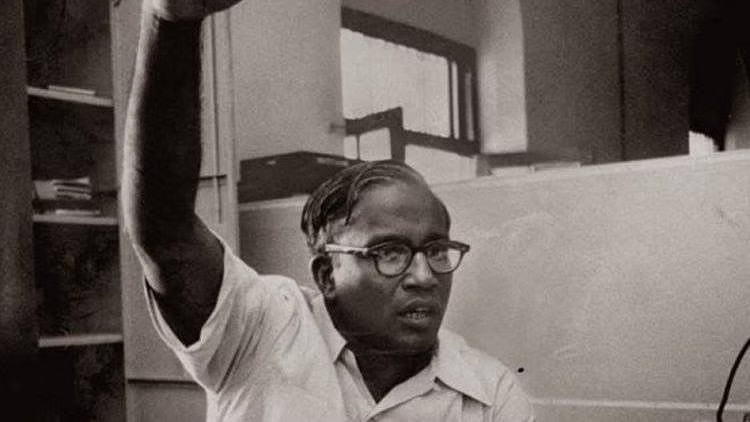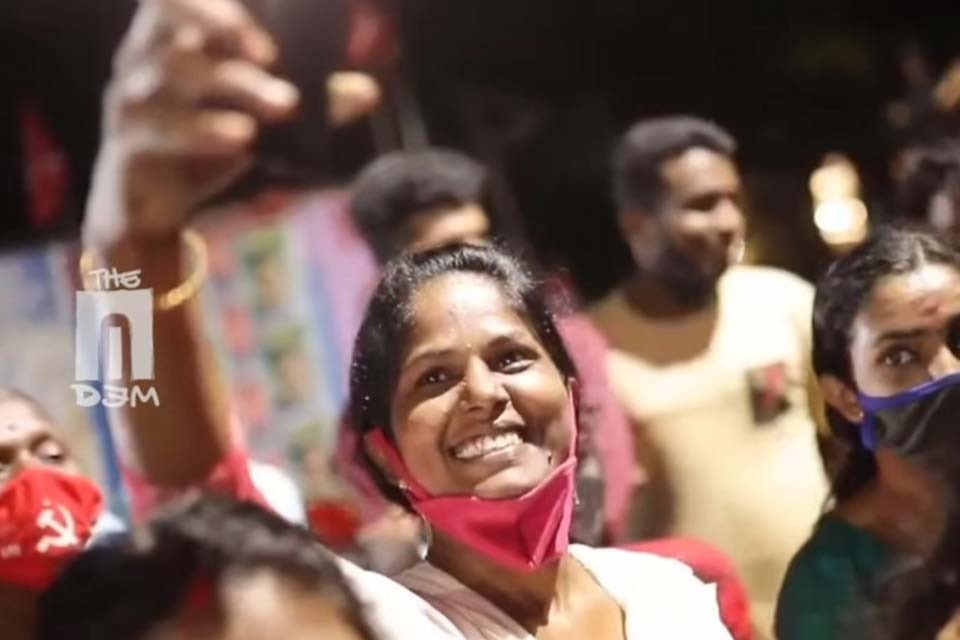
In pre-independence Malabar, there was a gentleman named Uneen Sahib belonging to a reputed Malappuram Muslim family, Kiliyan Mannil, who had turned 600 acres of Mattummal temple land on lease from the Kundrackal nairs into a rubber plantation. He also constructed a bungalow using the damaged though beautifully engraved colonnades and beams from the temple ruins.
Subsequently, he is said to have contracted diseases and beset by financial issues. Sahib, it seems, consulted a siddha ascetic and prominent astrologers who advised him to reconstruct the temple in its past glory. simultaneously he is also said to have had a vision of Durga. This miraculous experience brought about a tremendous change in his religious attitude.
Under the guidance of scholars, Kanipayyur Namboothiri, a thachu-shastra expert, and a thanthri, Kaaladi Vasudevan Namboothiri of Padinjareedathu mana, the re-construction started. After the temple was established in accordance with tantra-shastra, daily worship and rituals started and continued to be performed conscientiously. Easwaran Embraanthiri of Angandipuram was appointed as chief priest.
Sahib abandoned his old ways, became a vegetarian and decided to lead a life of ‘virtue,’ studying Hindu scriptures and philosophical texts. In his desire to plumb the depths of Hinduism, he sought the company of scholars and sanyasis. In quest for the holy grail, he went to the Arya Samaj at Calicut along with his brother and sons to get converted into Hinduism under the ritualistic shudhi offered by Shri Buddha Singh from Punjab. Shri Shanker Shastri, RSS pracharak planned arrangements at the venue.

Sahib accepted the name Ramasimhan, while younger brother Alippu became Dayasimhan. His sons became Fateh Singh and Zorawar Singh. When a Muslim scholar criticised the conversion, Ramasimhan is said to have retorted – “I have not committed any mistake. It was my grandmother who, on being captured, committed the fault of converting to Islam. I am re-converting to rectify it.”
After conversion, Ramasimhan followed the Hindu lifestyle, strictly following all rites and rituals. Moreover, he began to praise the virtues of Hinduism among Muslims. At the request of Ramasimhan some Namboodiris agreed to change Dayasimhan into a brahmin through Hiranyagarbha, and he became Narasimhan Namboodiri. Their murder by religious fanatics in the days prior to our independence is considered to be one of the triggers that fuelled the rise of incipient communalism in the region.
It would be interesting to analyse why the Sangh has so assiduously targeted Malabar since the resplendent dawn of our independence. Propagating minority-bashing is in keeping the ideology of M S Golwalkar, who followed K B Hedgewar as the RSS chief. In his Bunch of Thoughts he identifies three categories, who hinder the majoritarian cause of Hindu Rashtra – Muslims, Christians, Communists. Des Raj Goyal, member of the RSS since 1940s, in his memoir mentions how Golwalkar formulated the ‘anti-communist, anti-socialist tradition’ of the organisation. Kerala, with its mix of all three unmatched by any other region in India, was the prime target.
In 1942, the RSS chief dispatched Dettopant Thengadi and Madhukar Oak to Malabar and Travancore, respectively. As in the rest of India, since almost all Congress stalwarts were imprisoned, there arose a political vacuum. Simultaneously, Communists were growing in popularity. RSS sensed an opportunity.
If in Nagpur the land for the first shaka was donated by the king, according to organisational records, a section of dominant caste Hindus, offended by the ‘Muslim-appeasement’ of Gandhiji, helped establish the first shakas in Kozhikode and Kannur. In Travancore, they worked among the mercantile class. Young aristocratic Hindus were the kernel of the fledgling network. Thengadi gave feedback that Communists were a major stumbling block, which resulted in Golwalkar giving him a blanket mandate to tackle it. Thus, the first training camp for instructors was conducted in Kozhikode in 1943, with Golwalkar in attendance. He was to visit Kerala every year, till his death in 1973.
RSS wanted to target Malabari Muslims. The oppressed Araya community was a soft target, and the organisation established pockets of influence. Then in the 1960s this manpower too was mobilised to participate in the construction of the Vivekananda memorial, which construct completed in 1970 is seen by historians as the first major unitarian project by RSS.
Eknath Ranade, who spearheaded it never forgave, like the RSS top rung, the then Kerala CM, E M S Namboodiripad, who refused to cooperate with them. It is an irony of history that among those stridently opposed to the communalists, should be brahmins – Pt. Nehru and EMS. This is all the more ironic when we consider the roster of towering leaders who were lured into this monolithic mission with Vivekananda as its irresistible diadem – TN CM Annadurai and V Nedunchezhian, both joined the memorial committee; as did Ram Manohar Lohia; one of the senior most MPs in 1962 Lok Sabha, Madhav Shrihari ‘Bapuji’ Aney, in whose honour as Governor of Bihar the road now mistakenly referred to as Anne Marg was originally named!; and Renu Chakravarti who influenced Bengali comrades, among others. After six Congress MPs raised the issue in the Lok Sabha on November 27, 1963, a memorandum signed by 323 MPs, with a forwarding letter by Aney, was addressed to both PM Nehru and the then Tamil Nadu CM, M Bhaktavatasal ama, stirring the project to life.

Ranade is on record on his dealings with the political heavyweights of those times: “Leaders of every political party, whether in power or in the opposition became willing partners of the Vivekananda Rock Memorial at Kanyakumari. The only Chief Minister who sent me back empty handed without contributing any amount to the Rock Memorial Fund was the then Kerala Chief Minister Comrade EMS Namboodiripad. I can say this much about my abortive interview with him. It was like conversing with a sphinx. It was monologue all the way on my part. Only an empty stare from the other side!”.

The Kozhikode connection to the vandalising of a symbol of faith, decades before the destruction of Babri Masjid, is worth recalling, as in this testimony from the January 19, 2013 issue of Organiser:
“…P B Lakshmanan lives in Kanyakumari Vivekananda Kendra along with his better half….Lakshmanan narrated the whole story of his involvement. He was the Mukhya Sikshak of an RSS sakha in Vellayil beach, Kozhikode. Sometime in 1962, then RSS Vibhag Pracharak P Madhavji and Zilla Pracharak V P Janardhanan summoned himself and his colleagues. It was a mission to be performed in Kanyakumari: A 6 feet tall Vivekananda statue to be installed on the rocks in connection with the centenary of Swamiji. Before that they should remove a cross installed on the rock. Lakshmanan and Balan, a swayamsevak from Kollam sakha agreed and set out for Kochi. From there they organised a boat and took it to Kanyakumari by road.
As soon as they reached there, Christian forces threatened them with dire consequences if they did not quit the place. Then comes then RSS Pranth Pracharak late Dathaji Didolkar. He told Lakshmanan and Balan that cross should be removed before Vijayadashami. That day itself Lakshmanan, Balan and 3 others went to the rocks by boat; very careful not to attract the attention of the Christian fishermen. The iron drill tool they had used failed to break the cross. They rowed back to the shore and organised a stronger drill belonging to road builders. They removed the cross before 10 p.m. in the night, without the knowledge of the opponents.
Next morning, Church leaders were taken by surprise to see that their efforts had been smashed. They discussed the matter with the Christian Circle Inspector of Police and installed one more cross in the night… Their plan was to clamp CrPC Section 144 the next morning so that none else would never be able to touch the cross again. Lakshmanan, a shrewd Sangh worker, got wind of the plan…He wanted to remove the cross immediately, before the district administration clamped Sec. 144.

Himself and his friends could see the presence of the boats of Christian fishermen around the rock with their musclemen on board. Lakshmanan’s friends were less in number and were not so enthusiastic and optimistic about a successful adventure. But, Laxmanan was determined; he set out with 4 friends. When they reached the rocks by 6.30 a.m., Christian musclemen had already left under the impression that Lakshmanan and friends would not do any adventure, especially after the daybreak. Lakshmanan told the colleagues: ‘I will break the cross; you fight until the last man dies.’ Balan showed the signal from the shore. Lakshmanan and his team finished the job and came back to mainland. The Christian fishermen followed their boats. Church bell kept on ringing. Hundreds of believers came out and congregated.
Lakshmanan and team had no way to escape. They took positions with lathis. It scared the opponents. They did not dare to come closer. By that time came RDO and police force… He ordered the crowd to disperse, lest he would order to shoot. The vicar and believers dispersed.
***
A Balakrishnan General Secretary of Vivekananda Kendra was emotional with respects and gratitude when he referred to the names of the first batch of Sangh workers who came to Kanyakumari from Kozhikode to perform the basic groundwork for rock memorial, that is a ‘risky’ bhumipooja. They are P B Lakshmanan, Vasu, Aravindan, Gangadharan, Prabhakaran, Narayanan M K and Prakashan…”
It is probably Nehru who articulated best the propelling force behind the Hindutva project. In his introduction to poet-essayist Ramdhari Singh Dinkar’s Sanskriti ke Chaar Adhyaay, the first Prime Minister avers: “There are two opposing and competing forces that we see operating in India’s history. One force is that which assimilates outside influences, creating integrity and harmony, and the other that encourages division; that which reinforces the tendency to separate one from another.” The statesman concludes: “No one community in India can claim monopoly over its heart and philosophy. Whatever is there in India, every Indian has contributed to its creation. If we don’t understand this fundamental fact, we will fail in understanding India. And if we don’t understand India, our thoughts, philosophy and actions will all be half-baked.”
A reason for their assiduous targeting of Malabar, might be because of our inclusive hospitality; history bearing witness to our syncretic shores clasping to her sandy bosom all the three great Abrahamic faiths, which made peaceful landfall here, wafted by the monsoon driven by trade winds.











